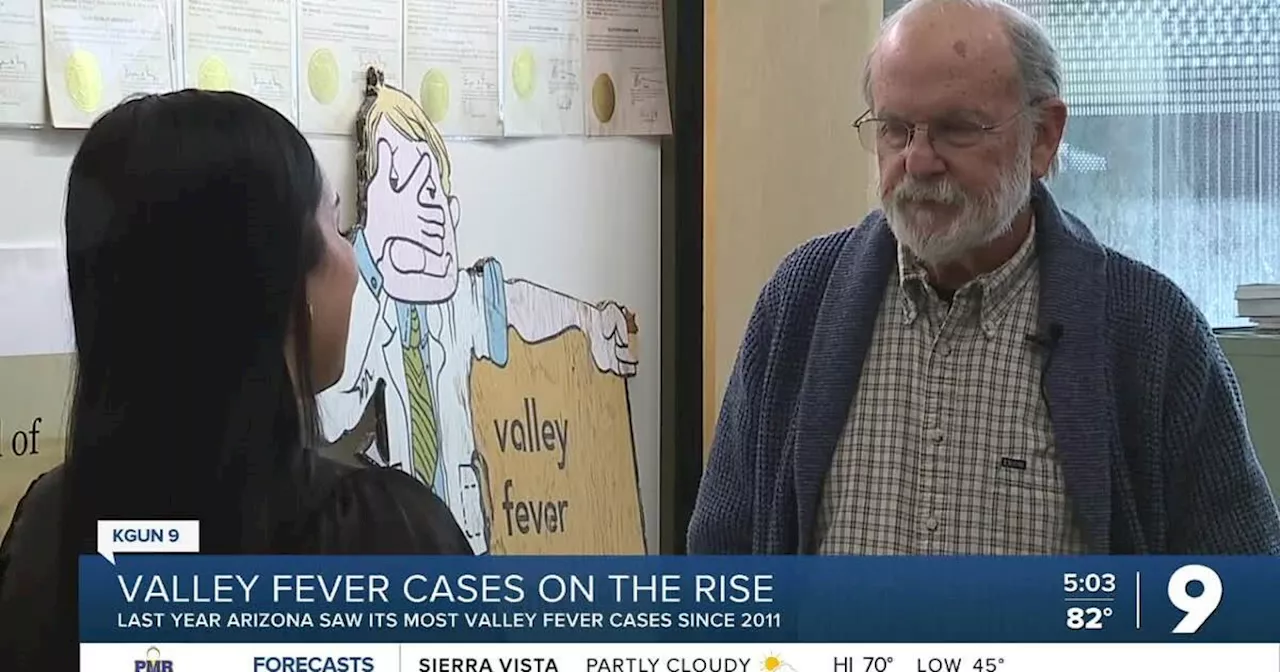Cases of tularemia, also known as 'rabbit fever', are increasing in the United States. While the disease is relatively rare, experts attribute the rise to improved detection methods. Tularemia is a zoonotic disease that can be transmitted from animals to humans through bites, contact, or contaminated water.
Cases of tularemia, also known as ' rabbit fever ,' are on the rise in the U.S., according to a new report from the Centers for Disease Control and Prevention ( CDC ). Caused by the bacteria Francisella tularensis, the disease commonly infects rabbits, hares and rodents. However, it is zoonotic, which means it can spread from animals to humans.
The bacteria is a 'tier-1 select agent,' a classification given to agents and toxins that 'present the greatest risk of deliberate misuse with significant potential for mass casualties or devastating effects to the economy, critical infrastructure or public confidence, and pose a severe threat to public health and safety,' per the CDC. Although tularemia is relatively rare, with only 2,462 diagnoses between 2011 and 2022, cases have risen 56% compared to the prior decade (2001 to 2010), as reported in the CDC’s Morbidity and Mortality Weekly Report. 'Increased reporting of probable cases might be associated with an actual increase in human infection, improved tularemia detection or both,' the report states. Daniel Ruderfer, M.D., chief of the Division of Pediatric Infectious Diseases at Hackensack Meridian K. Hovnanian Children's Hospital in New Jersey, believes that the increase in cases is mostly due to improved microbiology detection methods. 'The traditional method of confirming cases has historically been via growth in culture and antibody testing,' he told Fox News Digital. 'However, newer detection methods, such as PCR testing, are likely a major contributor to the increase in reported cases.' 'Newer detection methods, such as PCR testing, are likely a major contributor to the increase in reported cases.' Humans can contract the disease through bites from deer flies or ticks, contact with infected animals, or exposure to contaminated water or aerosols, the same source stated. Symptoms of tularemia can vary depending on the type of disease. General symptoms include chills, headache, malaise, fatigue, anorexia, myalgia, chest discomfort, cough, severe sore throat, vomiting, diarrhea, and abdominal pain, according to Ruderfer. 'Depending on the location of the infected bit or scratch, people can develop localized lymphadenopathy (enlarged lymph nodes) and a cutaneous ulcer at the infection site,' he said. 'Other manifestations include conjuctivitis, pneumonia and potentially even bloodstream infections.' The death rate from the disease is typically low, less than 2%, but the CDC noted that it can be as high as 24% in rare, severe cases. Tularemia can be treated with antibiotics, but no vaccine is currently available. 'The infection is absolutely dangerous and potentially life-threatening if not treated with appropriate antibiotics,' said Ruderfer. Those most at risk include children between 5 and 9 years of age, older men, American Indian and Alaskan Native people, and those living in central U.S. states, according to the report. 'The infection is absolutely dangerous and potentially life-threatening if not treated with appropriate antibiotics.' The general population is not at an 'obvious' risk for infection unless they come into physical contact with an infected rabbit, tick or deer fly, the expert noted. Those who hunt or interact routinely with rabbits should see a doctor if they develop any concerning symptoms, he advised. For more Health articles, visit www.foxnews.com/health 'Many factors might contribute to the higher risk for tularemia in this population, including the concentration of Native American reservations in central states and sociocultural or occupational activities that might increase contact with infected wildlife or arthropods,' the CDC wrote
Tularemia Rabbit Fever Zoonotic Disease Antibiotics CDC
United States Latest News, United States Headlines
Similar News:You can also read news stories similar to this one that we have collected from other news sources.
 Rabbit Fever Cases on the Rise in the USThe Centers for Disease Control and Prevention (CDC) is reporting an increase in tularemia cases, or 'rabbit fever,' in recent years. The disease, typically spread through contact with infected animals or their habitats, has led to over 2,400 reported infections from 2011 to 2022. The CDC warns that while insect bites and animal contact are common modes of transmission, lawnmower accidents can also spread the disease.
Rabbit Fever Cases on the Rise in the USThe Centers for Disease Control and Prevention (CDC) is reporting an increase in tularemia cases, or 'rabbit fever,' in recent years. The disease, typically spread through contact with infected animals or their habitats, has led to over 2,400 reported infections from 2011 to 2022. The CDC warns that while insect bites and animal contact are common modes of transmission, lawnmower accidents can also spread the disease.
Read more »
 ‘Rabbit fever’ cases rising in US as CDC warns of zoonotic bacterial diseaseCases of tularemia, also known as “rabbit fever,' are on the rise in the U.S., according to a new report from the CDC. The report identifies symptoms and the groups most at risk.
‘Rabbit fever’ cases rising in US as CDC warns of zoonotic bacterial diseaseCases of tularemia, also known as “rabbit fever,' are on the rise in the U.S., according to a new report from the CDC. The report identifies symptoms and the groups most at risk.
Read more »
 Tularemia: The 'rabbit fever' that can fatally infect humansEmily is a health news writer based in London, United Kingdom. She holds a bachelor's degree in biology from Durham University and a master's degree in clinical and therapeutic neuroscience from Oxford University. She has worked in science communication, medical writing and as a local news reporter while undertaking journalism training.
Tularemia: The 'rabbit fever' that can fatally infect humansEmily is a health news writer based in London, United Kingdom. She holds a bachelor's degree in biology from Durham University and a master's degree in clinical and therapeutic neuroscience from Oxford University. She has worked in science communication, medical writing and as a local news reporter while undertaking journalism training.
Read more »
 California Battles Soaring Valley Fever CasesValley fever cases are on a sharp rise in California, with 2024 already surpassing the total cases recorded in 2023. Kern County remains a hotspot, but several other counties have seen significant increases. Experts link the surge to factors like recent wet winters, climate change, and increased construction.
California Battles Soaring Valley Fever CasesValley fever cases are on a sharp rise in California, with 2024 already surpassing the total cases recorded in 2023. Kern County remains a hotspot, but several other counties have seen significant increases. Experts link the surge to factors like recent wet winters, climate change, and increased construction.
Read more »
 Valley Fever Cases Surge in ArizonaArizona is experiencing a rise in Valley fever cases. Experts link the increase to the state's arid climate and soil conditions.
Valley Fever Cases Surge in ArizonaArizona is experiencing a rise in Valley fever cases. Experts link the increase to the state's arid climate and soil conditions.
Read more »
 The Rise of Memes ($RISE) Launches: A Meme-Inspired Strategy Game on the BlockchainThe Rise of Memes ($RISE) is a new play-to-earn mobile game that combines real-time strategy gameplay with meme culture. Players can choose from five unique factions, lead meme-inspired heroes, and form alliances to dominate the map.
The Rise of Memes ($RISE) Launches: A Meme-Inspired Strategy Game on the BlockchainThe Rise of Memes ($RISE) is a new play-to-earn mobile game that combines real-time strategy gameplay with meme culture. Players can choose from five unique factions, lead meme-inspired heroes, and form alliances to dominate the map.
Read more »
